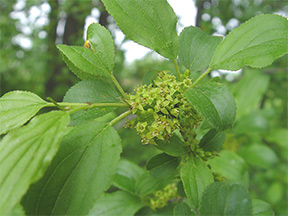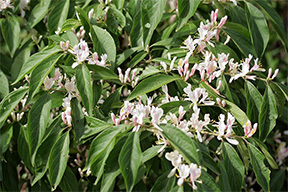Invasive Plants Regulated in Ohio
- Lynn White
- Jan 24, 2019
- 2 min read
If you are like me, you will be thinking about what you can plant in your garden and your yard once it warms up outside. Please be careful with your plant selection as Butler County has many issues with invasive plants. Many of these plants have been sold in the nursery trade, until we realized the havoc they cause.
Ohio has banned the sale of more than three dozen invasive plant species under new rules in 2018. It was not a short process to come up with the list. In September of 2014, the Ohio General Assembly granted the Ohio Department of Agriculture (ODA) the exclusive authority to regulate invasive plants species. ODA spent nearly two years to receive stakeholder input. As of January 7, 2018, the established new rules have been effective.
Officials say the plants defined as invasive under this law can spread aggressively and choke out others in wild spaces, forests and parks, and along highways. They also can lower property values and prompt seemingly endless battles to contain them.
These rules prohibit the sale and distribution of invasive plants in the state of Ohio. Further, the rules establish a committee which will advise ODA on matters regarding invasive plants. In some cases businesses may have invested considerable time and resources into growing some of these plants. These rules include a grace period for the prohibition to take effect for some species, which allows businesses time to transition toward alternative plants to market as replacements.
One of the most impactful parts of this law is the stopping of selling of all flowering pear trees by 2023. Several types of honeysuckles, olive plants, fig buttercups, the common reed and hybrid cattails are also included on the list.
Several of these species may seem a surprise to homeowners, as they are often in high demand at garden centers. The reason for their demand are the same qualities that make them a huge problem; they have adapted really well to living in Ohio, and so are hard for those of us without green thumbs to kill.
Here is a list of the plants:
· Ailanthus altissima, tree-of-heaven
· Alliaria petiolata, garlic mustard
· Berberis vulgaris, common barberry
· Butomus umbellatus, flowering rush
· Celastrus orbiculatus, Oriental bittersweet
· Centaurea stoebe ssp. Micranthos, spotted knapweed
· Dipsacus fullonum, common teasel
· Dipsacus laciniatus, cutleaf teasel
· Egeria densa, Brazilian elodea
· Elaeagnus angustifolia, Russian olive
· Elaeagnus umbellata, autumn olive
· Epilobium hirsutum; hairy willow herb
· Frangula alnus, glossy buckthorn
· Heracleum mantegazzianum, giant hogweed
· Hesperis matronlis, dame's rocket
· Hydrilla verticillata, hydrilla
· Hydrocharis morsus-ranae, European frog-bit
· Lonicera japonica, Japanese honeysuckle
· Lonicera maackii, amur honeysuckle
· Lonicera morrowii, Morrow's honeysuckle
· Lonicera tatarica, tatarian honeysuckle
· Lythrum salicaria, purple loosestrife
· Microstegium vimineum, Japanese stiltgrass
· Myriophyllum aquaticum, parrotfeather
· Myriophyllum spicatum, Eurasian water-milfoil
· Nymphoides peltata, yellow floating heart
· Phragmites australis, common reed
· Potamogeton crispus, curly-leaved pondweed
· Pueraria montana var. lobate, kudzu
· Ranunculus ficaria, fig buttercup, lesser celandine
· Rhamnus cathartica, European buckthorn
· Rosa multiflora; multiflora rose
· Trapa natans, water chestnut
· Typha angustifolia, narrow-leaved cattail
· Typha x glauca, hybrid cattail
· Vincetoxicum nigrum, black dog-strangling vine, black swallowwort
· Lythrum virgatum, European wand loosestrife (effective January 7, 2019)
· Pyrus calleryana, callery pear (effective January 7, 2023)
For questions regarding Ohio’s Invasive Plant Regulations, please contact the Plant Pest Control Program at 614-728-6400.





























